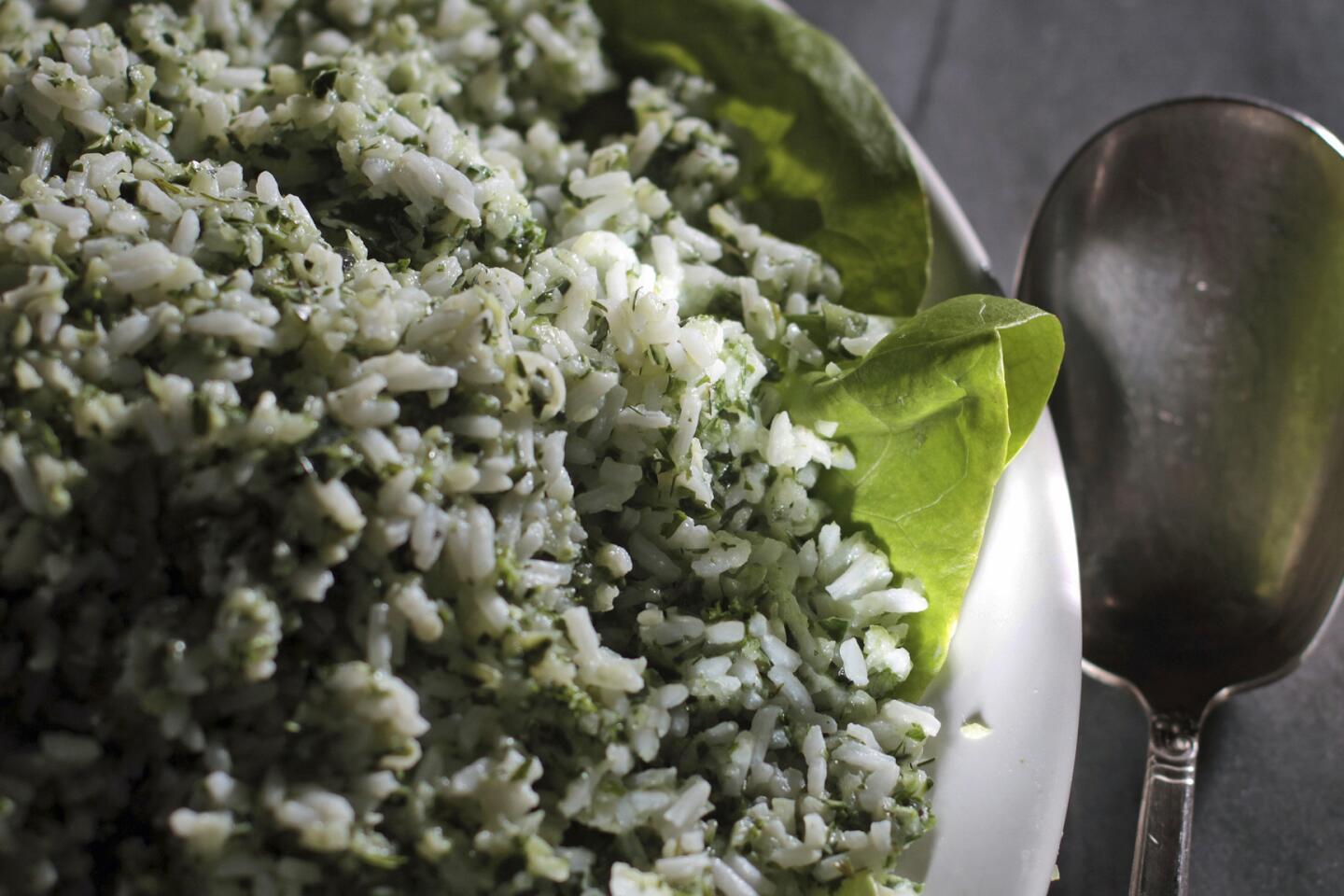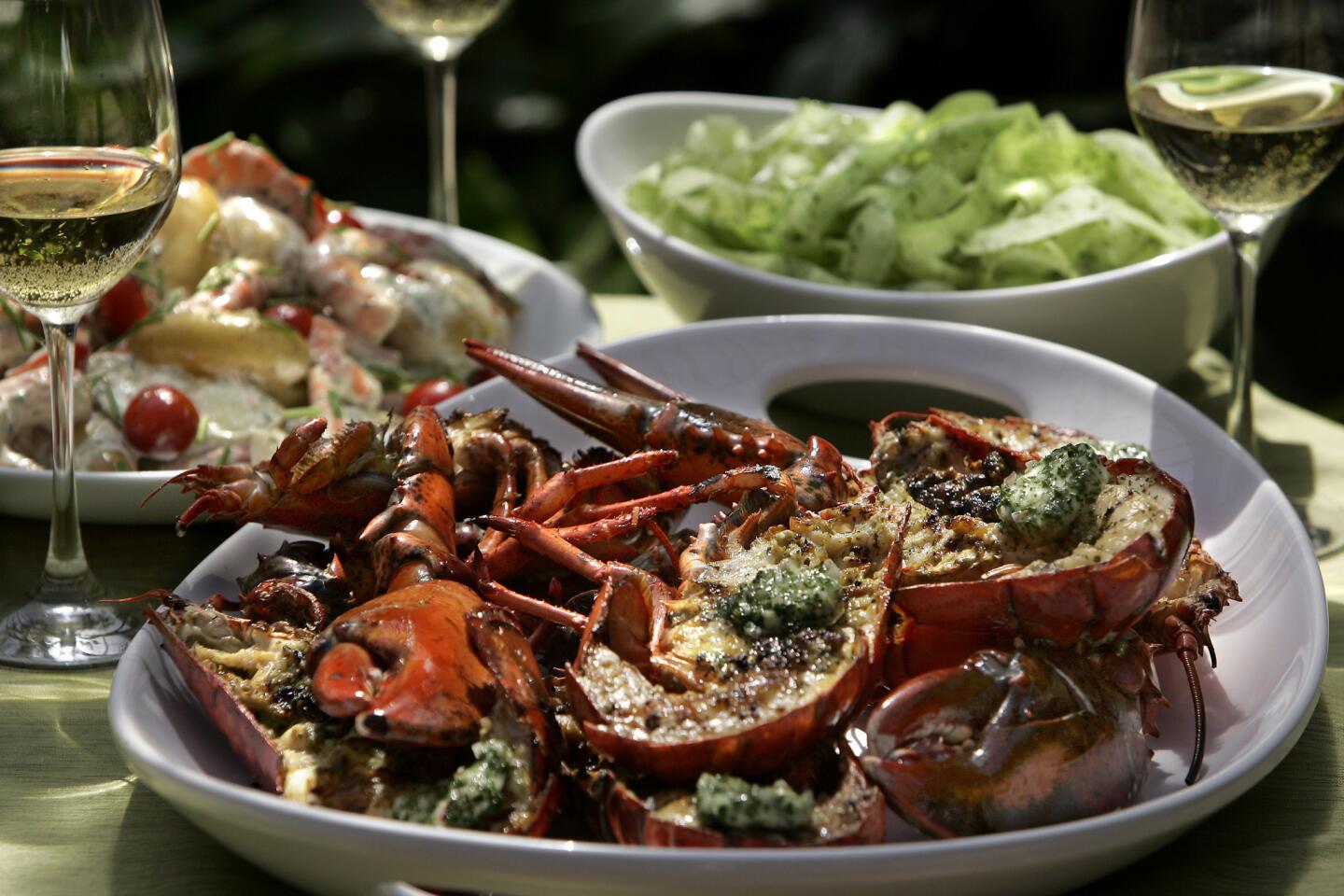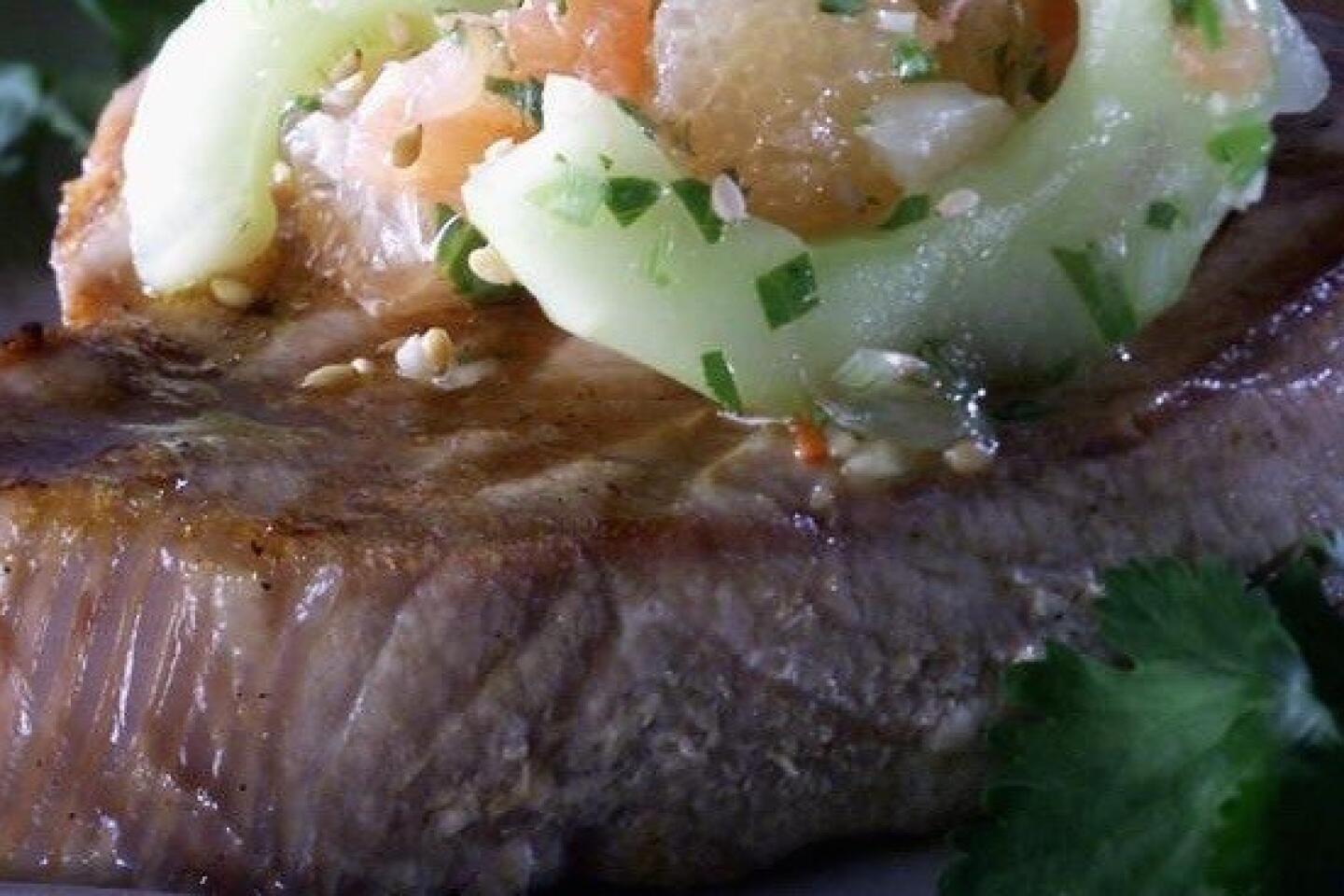Buy this now: Cucumbers, with 12 recipes
Is it time for cucumbers to become cool again? Food fashion being as fickle as it is, we have seen waves of enthusiasm for everything from fava beans to kale. Now we might be on the cusp of a hot streak for cucumbers.
Go to the market and you’ll find half a dozen types where once you saw only those big, thick-skinned slicers. There are cucumbers that are nearly a foot long and there are cucumbers that are the size of kumquats. Most are long, but a few are round. Some are seedy, some not so much.
Basically, though, cucumbers can be divided into two types — there are the ones with thin skins, such as Kirbys, that are best for pickling; and there are cucumbers with thick skins that are best for slicing — though we’ve been known to dice Kirbys and throw them into dishes as well.
Flavor-wise, they tend to be similar, with a fresh green taste that is closely related to the rinds of melons (not surprising since they are first cousins).
But the biggest question many people seem to have about cucumbers has to do not with how you prepare them but what happens after. Put simply — cucumbers make some people burp.
At one point, it was thought that it was the cucumber’s seeds that caused this. And that spurred an exploration of seedless varieties. But it turns out that it’s really caused by bitter compounds that show up in cucumbers sometimes. Fun fact: Since cucumbers belong to the cucurbit family, they’re called cucurbitacins.
The plant produces these when it is stressed — by high temperatures or lack of water, mostly, so keep an eye out this summer since we’ve been experiencing plenty of both.
A little of this bitterness is good — otherwise cucumbers wouldn’t taste like much at all. But if you get one that tastes exceedingly bitter, you can usually get rid of most of it by peeling particularly deeply around the stem and blossom ends, where it tends to concentrate.
The obvious thing to do with cucumbers is cut them up and add them to a salad, preferably one with tomatoes, black olives, feta cheese and toasted bread (fatoush). But here are 12 other alternatives just as appealing.
How to choose: It’s pretty easy — avoid any cucumbers that show wilting or soft spots. After that, look for cukes that have deep, saturated color. Look also for the spot where they were resting on the ground — just like with melons, that should be golden, not white.
How to store: Keep cucumbers in a tightly sealed bag in the refrigerator, but not for too long — they are sensitive to the cold and will develop soft spots fairly quickly.
Are you a food geek? Follow me on Twitter @russ_parsons1
More to Read
Eat your way across L.A.
Get our weekly Tasting Notes newsletter for reviews, news and more.
You may occasionally receive promotional content from the Los Angeles Times.













